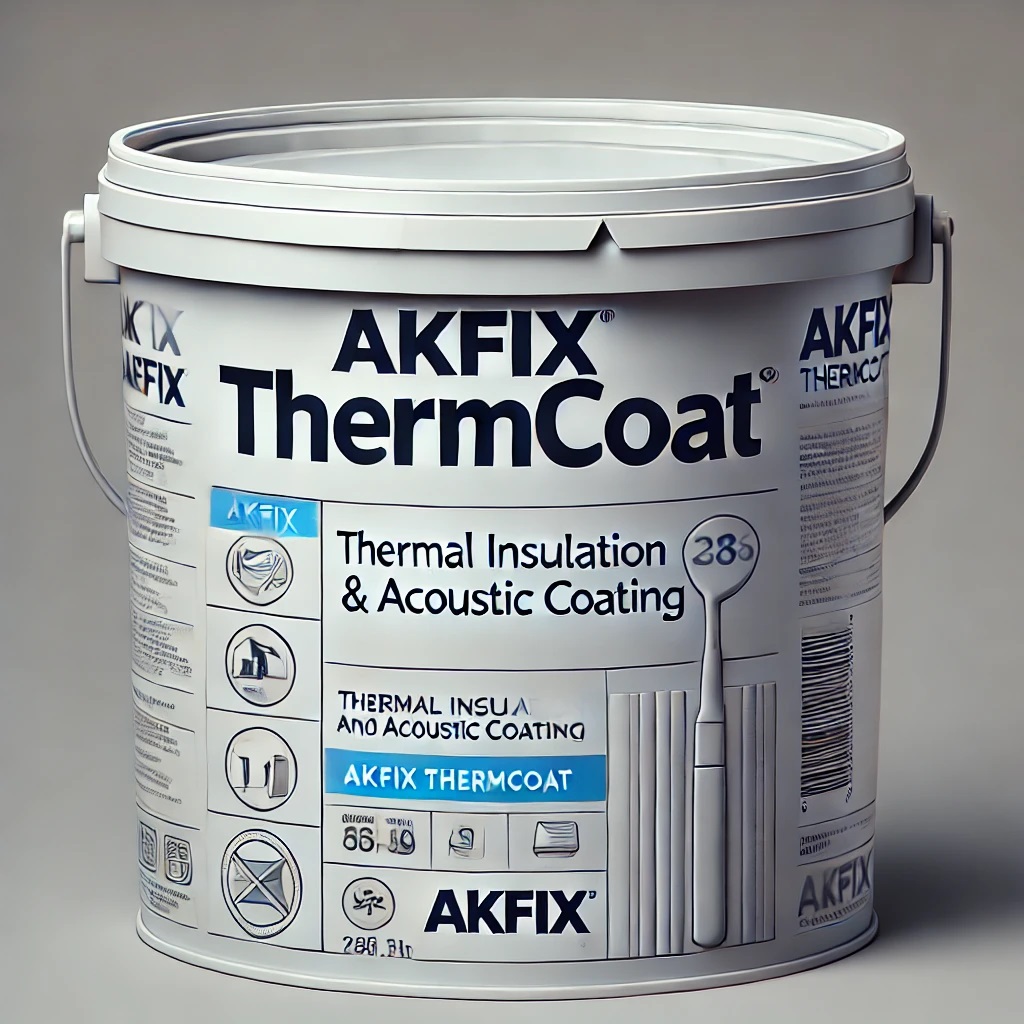
When it comes to insulating your home and improving energy efficiency, Akfix Thermcoat is an innovative solution that stands out. This thermal insulation coating is designed to reduce heat loss, enhance comfort, and even contribute to noise reduction. However, one of the most common questions from homeowners and contractors alike is whether Akfix Thermcoat requires a primer before application. In this article, we’ll dive into the details of Akfix Thermcoat, explore the necessity of using a primer, and provide insights to help you get the best results.
What is Akfix Thermcoat?
Akfix Thermcoat is a high-performance thermal insulation coating that is applied to walls, ceilings, and other surfaces. Unlike traditional insulation methods, which involve bulky materials like fiberglass or foam boards, Thermcoat is applied like a paint, creating a thin, insulating layer. This makes it a versatile option for both new constructions and renovations, particularly in situations where traditional insulation methods are impractical.
Does Akfix Thermcoat Require a Primer?
The necessity of a primer before applying Akfix Thermcoat depends largely on the surface you’re working with.
When a Primer is Needed:
- Porous Surfaces: If you are applying Thermcoat on porous surfaces such as concrete, brick, or plaster, a primer is generally recommended. The primer acts as a sealer, preventing the insulation coating from being absorbed into the substrate, which could affect its insulating properties.
- Rough or Uneven Surfaces: For rough or uneven surfaces, a primer helps to smooth out the application area, ensuring that the Thermcoat adheres properly and creates a uniform insulating layer.
- Metal Surfaces: If the surface is metallic, applying a primer specifically designed for metal surfaces is crucial. This prevents issues like corrosion or poor adhesion, which can compromise the effectiveness of the insulation.
When a Primer May Not Be Necessary:
- Pre-painted or Sealed Surfaces: If the surface has already been painted or sealed with a suitable material, applying a primer may not be necessary. Thermcoat can often adhere well to these surfaces without additional preparation.
- Non-porous Surfaces: Surfaces like wood, drywall, or previously coated areas might not require a primer, especially if they are in good condition. However, it’s always advisable to test a small area first to ensure proper adhesion.
Steps to Apply Akfix Thermcoat
- Surface Preparation: Ensure the surface is clean, dry, and free of any dust, grease, or loose materials. This is crucial for achieving a strong bond between the Thermcoat and the substrate.
- Apply Primer (if necessary): If the surface requires a primer, apply it according to the manufacturer’s instructions and allow it to dry completely.
- Mixing the Coating: Thoroughly mix Akfix Thermcoat before application to ensure consistency.
- Application: Use a brush, roller, or spray gun to apply the coating. For best results, apply multiple thin layers rather than one thick layer, allowing each layer to dry before applying the next.
- Curing Time: After application, allow the coating to cure as per the product instructions. This ensures that the insulation properties are fully activated.
Benefits of Using Akfix Thermcoat
- Energy Efficiency: Reduces heat loss and helps lower energy bills.
- Space-Saving: Unlike traditional insulation, Thermcoat adds minimal thickness to walls and ceilings.
- Noise Reduction: Provides a sound-dampening effect, improving indoor acoustics.
- Easy Application: Can be applied with standard painting tools, making it accessible for DIY projects.
FAQs About Akfix Thermcoat
1. Can Akfix Thermcoat be applied outdoors?
Yes, Akfix Thermcoat can be applied both indoors and outdoors. However, for exterior applications, ensure that the surface is well-prepared and consider using a weather-resistant primer for best results.
2. How thick should Akfix Thermcoat be applied?
The thickness of the application depends on the specific requirements of your project. Generally, multiple thin layers are recommended, building up to the desired thickness to ensure optimal insulation.
3. Is Akfix Thermcoat suitable for all surfaces?
While Akfix Thermcoat is versatile, it is most effective on surfaces that can hold the coating well, such as concrete, plaster, wood, and metal. Testing on a small area is recommended for unconventional surfaces.
4. How long does Akfix Thermcoat last?
When applied correctly, Akfix Thermcoat can last many years. Its durability will depend on factors like the surface preparation, environmental conditions, and whether it was applied according to the manufacturer’s guidelines.
5. Can I paint over Akfix Thermcoat?
Yes, you can paint over Akfix Thermcoat. However, it’s recommended to use a breathable paint to maintain the thermal properties of the coating.
Conclusion
Akfix Thermcoat offers a modern, effective way to insulate your home, with the added benefits of being easy to apply and space-saving. Whether you need a primer before application depends on the surface you’re working with, but in many cases, a primer is recommended to ensure optimal performance. By following the proper preparation and application steps, you can maximize the benefits of Akfix Thermcoat and enjoy a more energy-efficient and comfortable living space.
